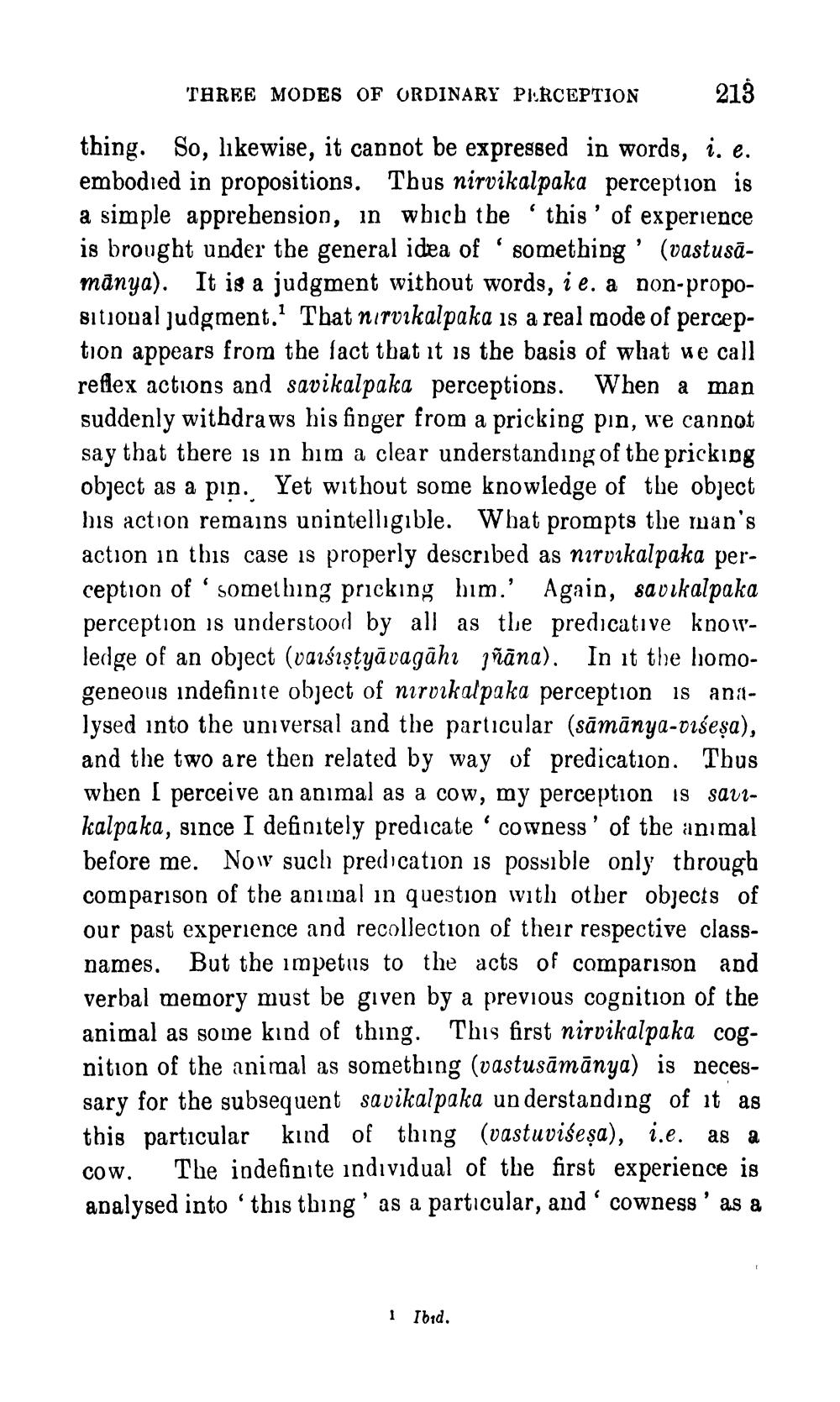________________
THREE MODES OF ORDINARY PERCEPTION
213
(
thing. So, likewise, it cannot be expressed in words, i. e. embodied in propositions. Thus nirvikalpaka perception is a simple apprehension, in which the 'this' of experience is brought under the general idea of something' (vastusãmanya). It is a judgment without words, i e. a non-propositional judgment.' That nirvikalpaka is a real mode of perception appears from the fact that it is the basis of what we call reflex actions and savikalpaka perceptions. When a man suddenly withdraws his finger from a pricking pin, we cannot say that there is in him a clear understanding of the pricking object as a pin. Yet without some knowledge of the object his action remains unintelligible. What prompts the man's action in this case is properly described as nirvikalpaka perception of something pricking him.' Again, savikalpaka perception is understood by all as the predicative knowledge of an object (vaisiṣṭyāvagāhi jñāna). In it the homogeneous indefinite object of nirvikalpaka perception is analysed into the universal and the particular (sāmānya-viśeṣa), and the two are then related by way of predication. Thus when I perceive an animal as a cow, my perception is savikalpaka, since I definitely predicate' cowness' of the animal before me. Now such predication is possible only through comparison of the animal in question with other objects of our past experience and recollection of their respective classnames. But the impetus to the acts of comparison and verbal memory must be given by a previous cognition of the animal as some kind of thing. This first nirvikalpaka cognition of the animal as something (vastusāmānya) is necessary for the subsequent savikalpaka understanding of it as this particular kind of thing (vastuviśesa), i.e. as a COW. The indefinite individual of the first experience is analysed into this thing' as a particular, and cowness' as a
6
"
1 Ibid.




